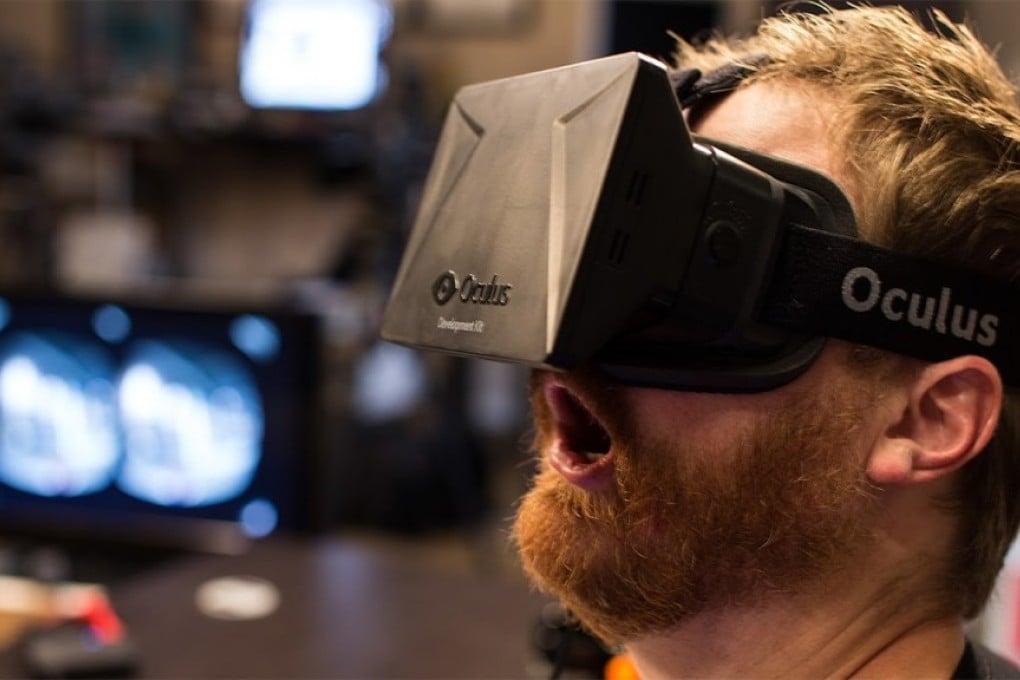Fun and games: virtual reality games are poised to enjoy huge growth in China, thanks to technological breakthroughs
Tech innovations showcased at CES 2017 in January promise a more immersive experience soon in living rooms

VR games and mobile eSports are expected to see explosive growth in China in 2017 as the quality of mobile games improves, according to IT market intelligence company International Data Corporation (IDC).
Johnny Zhou, analyst at IDC China, says that while remaining closely involved with the traditional PC and mobile industries, ”the gaming industry will draw from artificial intelligence (AI), wearables, virtual reality, big data, cloud service and other emerging technologies and use animation, literature, movie and TV, live broadcasting, themed amusement park and other traditional entertainment industries to create more disruptive value”.
Among IDC’s predictions for the year is the adoption of AI, and its core functions of computing, sensing and cognition, to improve the gaming experience.
IDC also forecasts the rise of wearable devices in gaming, and the birth of smart gloves for VR game control.
It sees huge room for growth in the console game market in China, a US$576 million sector in which sales of games alone grew 200 per cent in 2016.
The tech innovations showcased at CES 2017 in January promise a more immersive experience soon in living rooms.

HTC Vive, a leader in room-scale Virtual Reality (VR), debuted two premium accessories slated for sale later this year: the Vive Tracker, with its additional tracking capabilities and new peripherals opening new options for immersive VR development; and the Vive Deluxe Audio Strap, with integrated earphones and easy headstrap adjustment for a more comfortable and convenient VR experience.
“To foster the long-term growth of VR, we want to make it even easier for developers to prototype and market more immersive controllers and accessories,” says Daniel O’Brien, GM, US and EMEA, Vive. “The Vive Tracker is the first step in growing an ecosystem of third-party accessories that will change how we interact with virtual experiences and provide consumers and businesses with an unlimited amount of content opportunities.”
Vive showcased a variety of Tracker-enabled accessories, including the first VR camera, multiple rifles built for VR shooters, haptic gloves for VR, and training applications for Major League Baseball players and professional firefighters.

Taiwan’s MSI launched its new line-up of products for the high-end gaming market, featuring the latest Intel seventh generation CPUs, chipsets and Nvivia GeForce GTX 10 GPUs. It includes VR-ready gaming laptops, gaming motherboards with amazing performance and design, ultimate gaming graphics cards equipped with Twin Frozr VI, imposing gaming desktop PCs and gaming gear peripherals. The company was presented with a CES 2017 innovation award for its VR One backpack PC, GS63VR Stealth Pro Gaming laptop PC and Z270 Gaming M7 motherboard.

Dell produced a gaming laptop geared towards the budget gamer. The 15-inch Dell Inspiron 15 7000, starting at US$799, comes with a Kaby Lake i5 CPU, a 1TB hybrid drive, and life-like Nvidia GeForce graphics. Dell says gamers should expect to get medium-to-high settings out of most games at 1080p. A large service bay door makes it easy to insert upgrades over time.

Fans of PC gaming weren’t forgotten, with a number of announcements in High Dynamic Range (HDR), the next major leap in display technology. Nvidia’s new HDR G-Sync gaming monitor, coming to market in the second quarter, is one of the breakthroughs which will deliver a broader contrast range, backlighting and richer colour. Nvidia is pioneering HDR for PC gaming monitors, linking them with G-Sync to provide a seamless, immersive visual experience.

Although you’ll need to wait a bit longer for this, Razer revealed Project Valerie, its prototype for a portable gaming laptop with three built-in monitors. Each 17.3-inch 4K IGZO display is equipped with Nvidia G-Sync technology that is capable of producing the smoothest possible framerates and expansive 180-degree Nvidia Surround View gaming. According to the company, gamers “can look forward to 100 per cent Adobe RGB colour accuracy and the greatest amount of screen real estate ever assembled in a single computer”.
Similar to Razer’s newest systems, Project Valerie - equipped with NvidiaA GeForce GTX 1080 - exceeds the minimum hardware requirements of HTC Vive and Oculus Rift, making it one of the most immersive, mobile VR-ready devices for enthusiasts and developers.
“Multimonitor desktop set-ups are becoming more necessary for professionals, creators, and gamers,” says Min-Liang Tan, Razer co-founder and CEO. “For the first time, we’ve engineered a solution that users can take with them. Project Valerie promises all of the functionality of three screens and none of the hassle.”
Anyone interested can register to receive announcements about Project Valerie at the Razer web site.